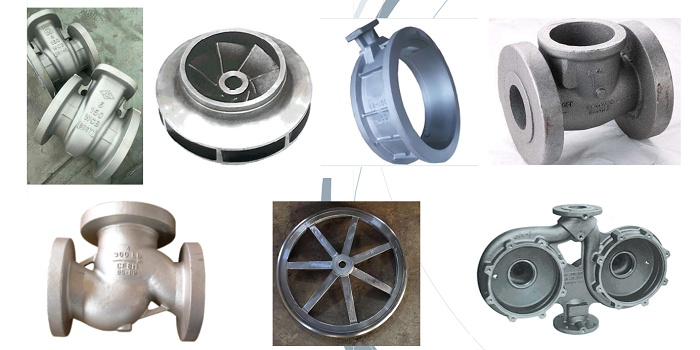
With the development of industrialization in China, ductile iron has become the main metal material in industrial production due to its good comprehensive performance, mainly based on ferrite matrix, and the typical brand is QT450-10. Because of its excellent mechanical properties, it has been widely used in metallurgical machinery equipment, petrochemical, pipeline industry, transportation and other industries. Due to the different service environments of castings, the requirements for the performance of ductile iron are getting higher and higher.
Compared with mixed matrix ferritic ductile iron, silicon solution strengthened ferritic nodular cast iron has higher strength, toughness and workability. This excellent performance makes more and more research on high silicon ferritic ductile iron. When Larker Richard, a Swedish scholar, increased the silicon content (mass fraction) of ductile iron (QT500-7) to 3.5%, the matrix structure was transformed into full ferrite, the tensile strength reached 500 MPa, the elongation was twice the original, and the hardness fluctuation range became smaller; By increasing the silicon content to 3.2%~3.4%, Zhu Hao developed the automobile wheel hub with high silicon ferrite ductile iron, which reduced the hardness fluctuation of different parts of the same casting from 30~40 HBW to 15 HBW. Tang Zhongquan and others adjusted the silicon carbon content of the body castings of the high-speed train tread cleaner to control it at Si 3.5%~4.3% and C 3.0%~3.5%. The tensile strength of the castings produced can reach 590 MPa and the elongation can reach 16%; The material of the vehicle brake rod housing produced by Hande Brake Pad Products Co., Ltd. is ductile iron, with silicon content of 3.0%~4.5%, tensile strength of 400~650 MPa, yield strength of 70%~90% of tensile strength, elongation of 10%~12%, and the matrix structure is mainly ferrite. Due to the brittle fracture of ductile iron caused by high silicon content, it is difficult to apply high silicon ductile iron to thin-walled large pipe fittings, and the research in this area is also relatively scarce.
The difference between lost foam casting process and traditional sand casting is that the gasification of the foam white mold will take away part of the heat, so it is particularly important to control the pouring temperature. If the pouring temperature is too low, non-metallic inclusions will easily occur, while if the pouring temperature is too high, the spheroidizing effect will be reduced and carbonization will affect the performance; And the silicon content will also affect the eutectic temperature of ductile iron and then affect the matrix structure. In this paper, high silicon ductile iron with silicon content of 2.9%~4.6% was prepared by lost foam casting process. Its microstructure and mechanical properties were studied, and the mechanism of silicon on the matrix structure and mechanical properties of high silicon ductile iron was analyzed, which provided a theoretical basis for the lost foam casting process of large high silicon ductile iron pipe fittings.
